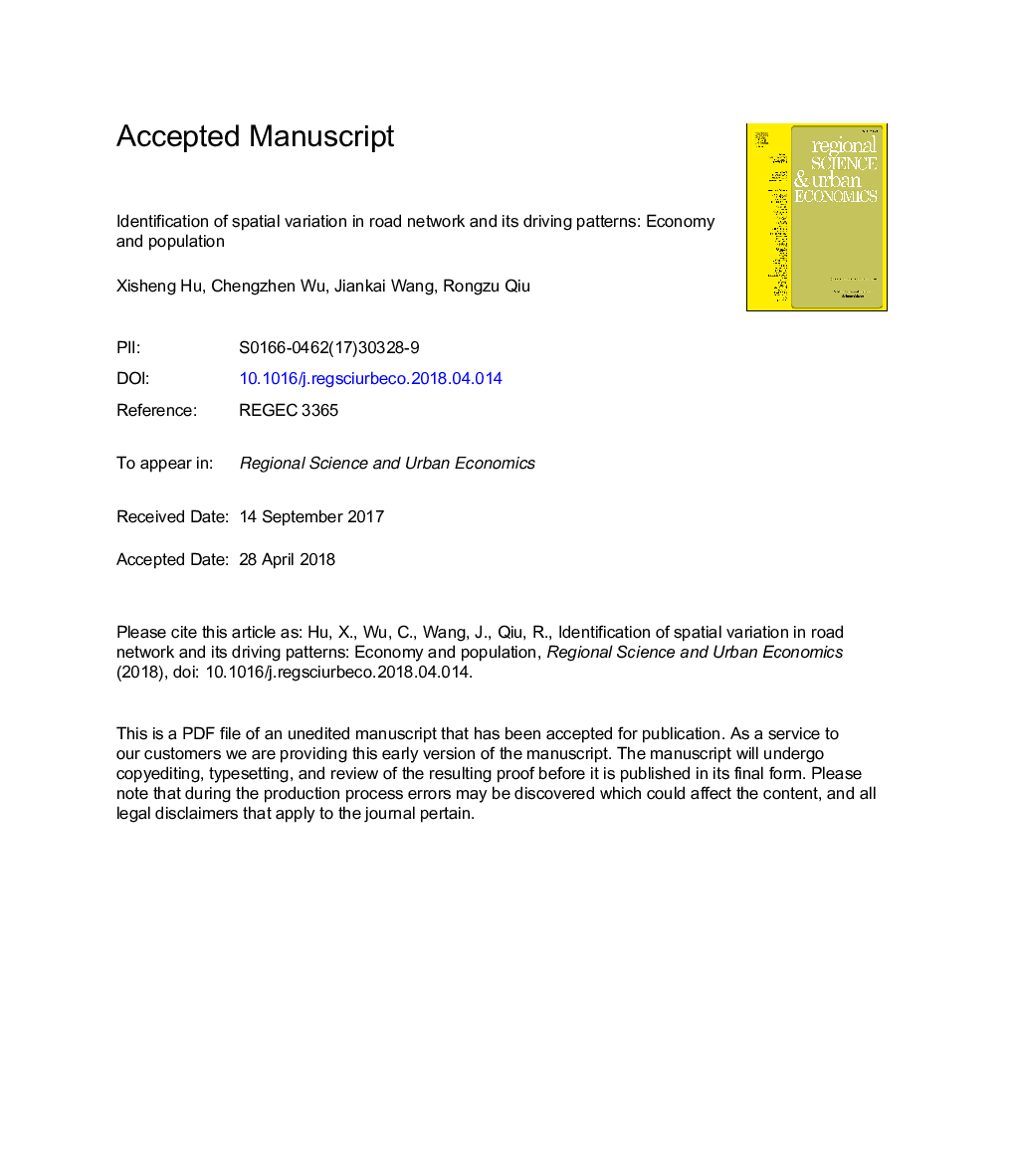| کد مقاله | کد نشریه | سال انتشار | مقاله انگلیسی | نسخه تمام متن |
|---|---|---|---|---|
| 7383601 | 1480523 | 2018 | 31 صفحه PDF | دانلود رایگان |
عنوان انگلیسی مقاله ISI
Identification of spatial variation in road network and its driving patterns: Economy and population
ترجمه فارسی عنوان
شناسایی تغییرات فضایی در شبکه جاده و الگوهای رانندگی آن: اقتصاد و جمعیت
دانلود مقاله + سفارش ترجمه
دانلود مقاله ISI انگلیسی
رایگان برای ایرانیان
کلمات کلیدی
شبکه جاده ای الگوی فضایی، همبستگی فضایی، رگرسیون وزنی جغرافیایی، استان فوجیان،
موضوعات مرتبط
علوم انسانی و اجتماعی
اقتصاد، اقتصادسنجی و امور مالی
اقتصاد و اقتصادسنجی
چکیده انگلیسی
China is a globally important ecosystem that is undergoing rapid development and land use/cover change (LUCC). The role of road networks in the LUCC is becoming increasingly important. Much of the upgrading in road networks is propelled by economy and population growth. However, the relationships between the road networks and the social-economic factors are poorly understood by using the ordinary least squares (OLS) regression, which assumes that the estimated beta value holds the same everywhere within a given study area. To determine whether there is spatial variation in the relationship between the road networks and the social-economic drivers in a given region, we employed a local model, geographically weighted regression (GWR), that provides a regression coefficient (beta) for each sample location within the study area. Taking Fujian Province, one of the most developed regions in China, as a case, this paper firstly employed an Exploratory Spatial Data Analysis (ESDA) to identify the spatial patterns of the road networks at the different sizes of sampling units. We found that the spatial distribution of road networks had an obvious tendency toward the geographical dependency, with High-High clusters seated in the eastern coastal areas and Low-Low clusters distributed dispersedly in the study area. The spatial patterns of the road networks had highly consistency in the different sizes of sample units. Then, the GWR model confirmed that the relationships between the road networks and the socioeconomic factors varied by locations, with multiple relationships (both synergy and tradeoff) between them coexisting in the study region. These relationships were also visualized by sign and magnitude of the estimated coefficients of GWR for each sampling unit, which allow us to compare the different effects of the dependent variables on the road networks across locations. We also found that the variable of gross domestic product density (GDPD) is a preferred indicator over the variable of population density (PD) to analyze the associations with the road networks. Thus, this study provided useful information to develop differentiated strategies for road development at the finer level by using the more nuanced GWR models.
ناشر
Database: Elsevier - ScienceDirect (ساینس دایرکت)
Journal: Regional Science and Urban Economics - Volume 71, July 2018, Pages 37-45
Journal: Regional Science and Urban Economics - Volume 71, July 2018, Pages 37-45
نویسندگان
Xisheng Hu, Chengzhen Wu, Jiankai Wang, Rongzu Qiu,
